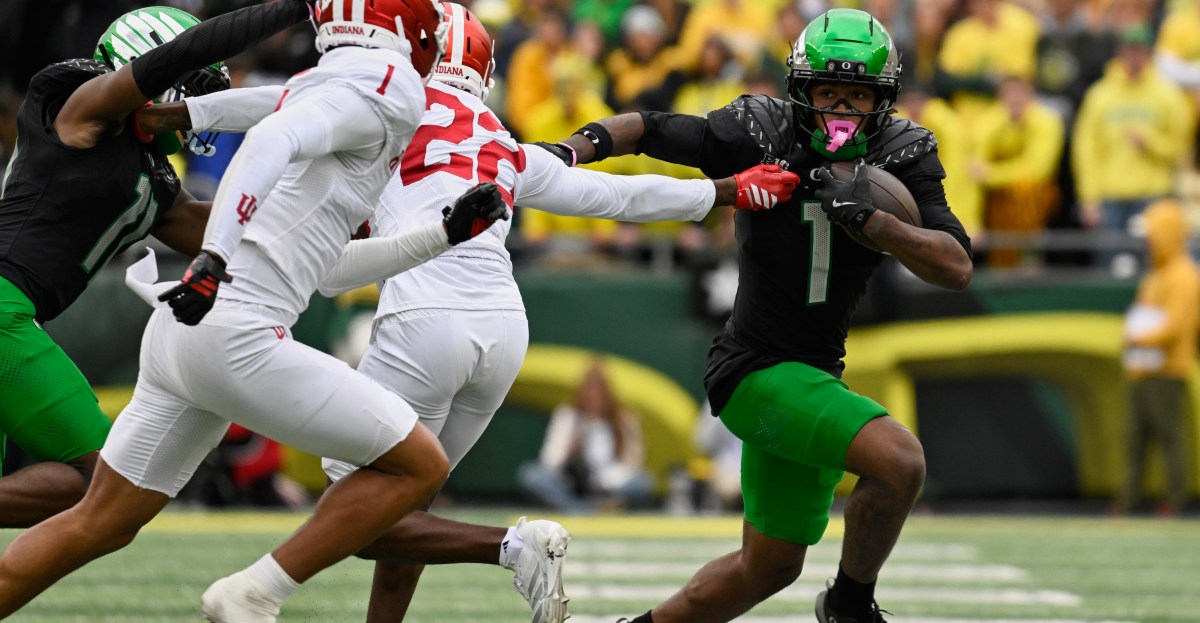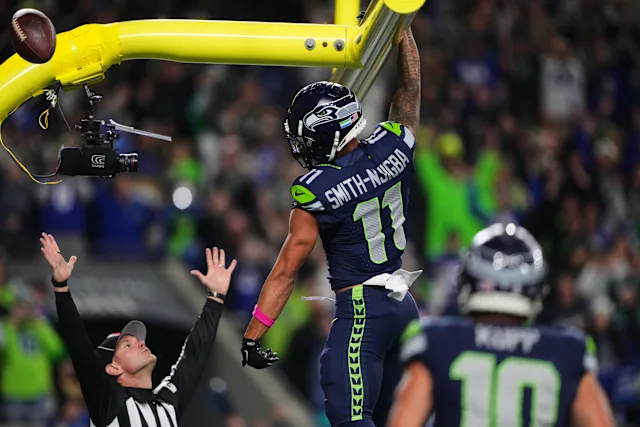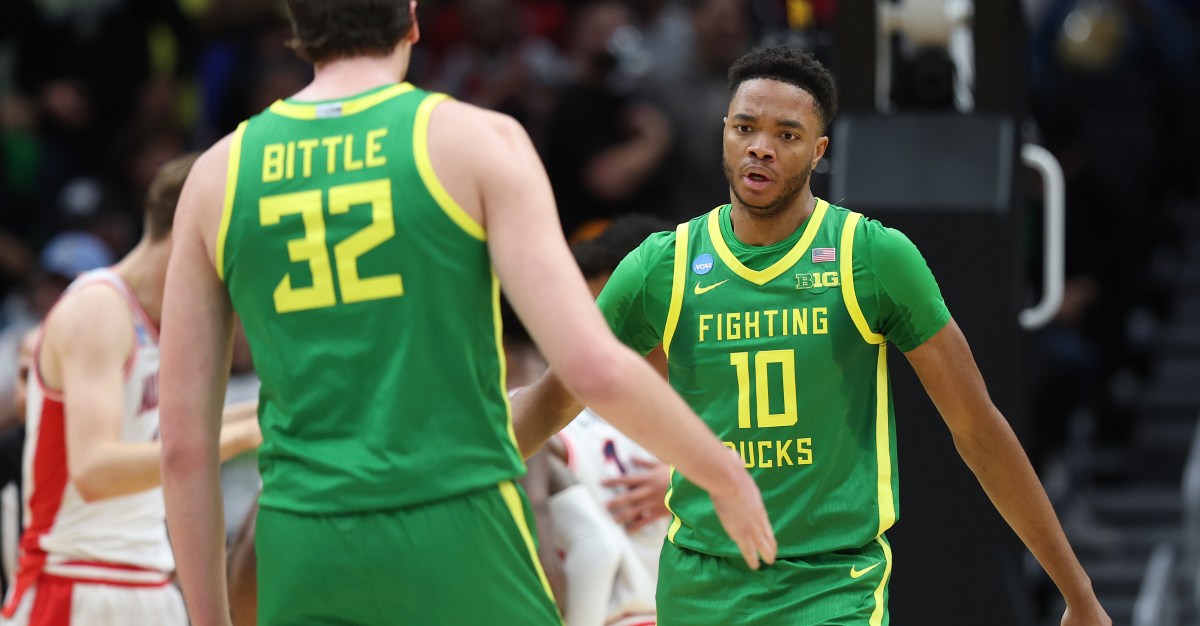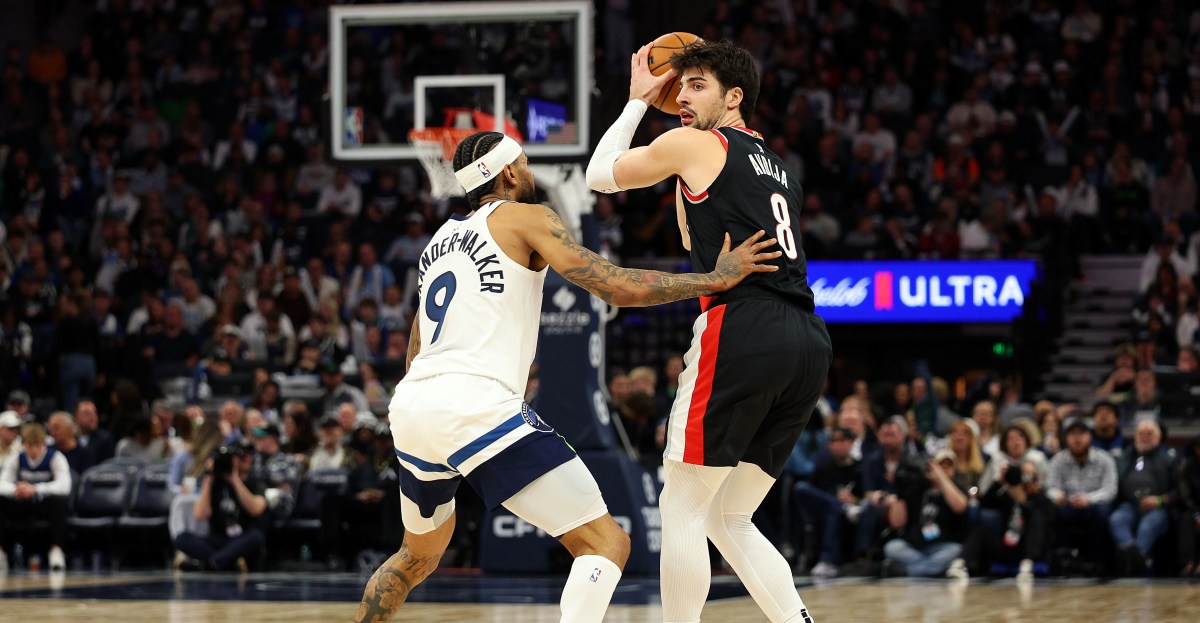Football: Screen Pass Analysis | Addicted To Quack
On January 2nd, 2015, a family member of mine complained about Oregon running WR screens constantly and how it never works, “They only get 3 or 4 yards.” I plead the case that it’s a chess match – a metaphor that football is often compared to, trying to find strategic ways to out-flank your opponent. It didn’t take long for Oregon to prove me right.
Sure, Oregon had run a few screen plays with minimal yardage gained. That’s like gambiting a pawn if you know the right line to play. On this day, Oregon did. Oregon hits Florida State with a fork of the rook and queen, gaining 13 yards on screen to Charles Nelson. Now, Florida State has to respect it. Oregon follows up immediately with a check – an intercontinental ballistic missile to Darren Carrington for 30 yards off a fake screen they’d been setting up all game; Touchdown Ducks.
A little over a decade later, I’m the one starting to complain about Oregon’s screen game. It’s inefficient at best. Oregon’s 2025 screen play success and explosiveness are lower than it has ever been under Dan Lanning. It’s not by a small margin either.
Note: this data was aggregated prior to Oregon’s matchup against Rutgers. On the third play of the game, needing 11 yards, Oregon called a WR screen to Gary Bryant Jr., who was met by defenders 6 yards shy of the first down. Even if you take away the fumble, this play is not successful. Fortunately, that would effectively be the last of Oregon’s offensive struggles in this contest as Oregon tallied 750 yards of offense and 0 punts.
Oregon found explosives time and time again, both on the ground and in the downfield passing attack against Rutgers. However, against better defenses, Oregon’s offense has not fared as well. The screen game has particularly struggled.
Oregon was successful on just one of four screen plays against Indiana. The lone success was also on the third play of the game, facing 3rd and 11. Indiana’s #4, Aiden Fisher, takes a bad angle, allowing Gary Bryant Jr. to get outside and beat the safety to the first down marker. Excluding that play, Oregon averaged just two yards per screen play.
On two of the failed screen plays, Indiana’s front did a better job rallying to the ball.
- Defensive End, Kellan Wyatt, isn’t fooled on the first example, disrupting Jordon Davison’s ability to make forward progress. This gives the rest of Indiana’s defense time to rally.
- On the second, Aiden Fisher redeems himself by outrunning LG, Emmanuel Pregnon, and tackling the ball carrier after a short gain.
The final failed screen pass never looked like it had a chance to succeed. As a fan, that’s what frustrates me the most. Oregon shifts Jordon Davison into the backfield, and the defensive picture doesn’t change. Oregon went from 3 on 3 outside to 2 on 3 with LB #46, Isaiah Jones, showing zone coverage shading halfway between the receivers and the backfield. As soon as Dante Moore releases the ball, all Jones has to do is force the receiver to the sideline and into the waiting arms of the Safety.
Against Penn State, Oregon ran eleven of its twenty-four midseason total screen plays. Five of those were successful, including a crucial first touchdown to Dierre Hill Jr., aided by a nasty rep from RT, Alex Harkey. Aside from that, none of screen plays jump out as a huge success. A few yards here, a few yards there, keeping the defense honest. Oregon averaged 4.82 yards per play on screen passes against Penn State.
It may be inconsequential, but on the final screen play, with 30 seconds left in regulation, Oregon has the numbers advantage and ends up with both Gary Bryant Jr. and Kenyon Sadiq blocking the same guy. If blocked correctly, this play could have been the catalyst for a three or four-play drive to set up a game-winning field goal.
Screen plays are like pawns. A good pawn break (block) or fianchetto (setup) can open up a piece behind for a big gain. Both serve multiple, important purposes. Screen plays help to counter aggressive pass rushes and, when run effectively, stretch the defense, forcing them to commit more bodies to the flats. You can’t abandon screens entirely.
Instead, I’d like to see Oregon be more selective about when they run them. As a rule of thumb in chess, you shouldn’t sacrifice material to attack the king without having more attacking pieces than your opponent has available to defend. Similarly, you need a numbers advantage in the screen games for it to reliably be effective. Simply put, I don’t want to see another WR screen without a numbers advantage or soft coverage.
Share this content:
















Post Comment